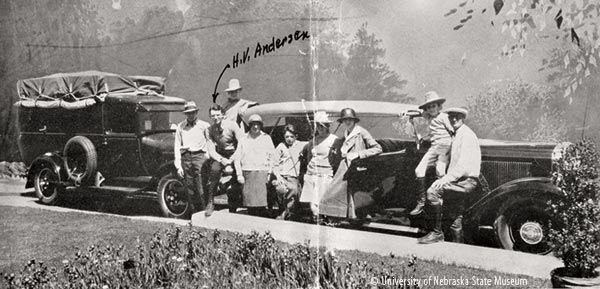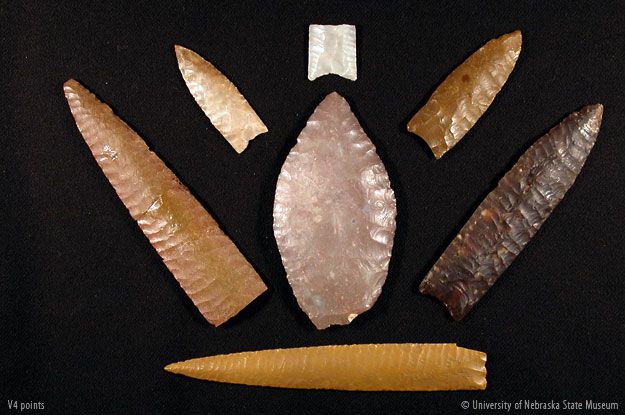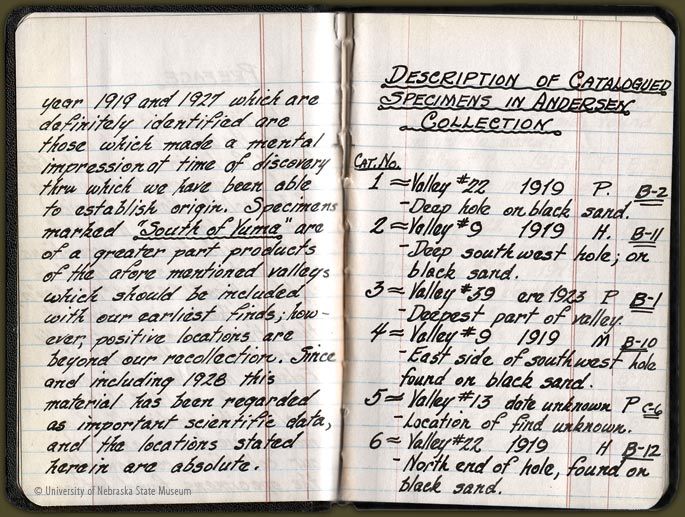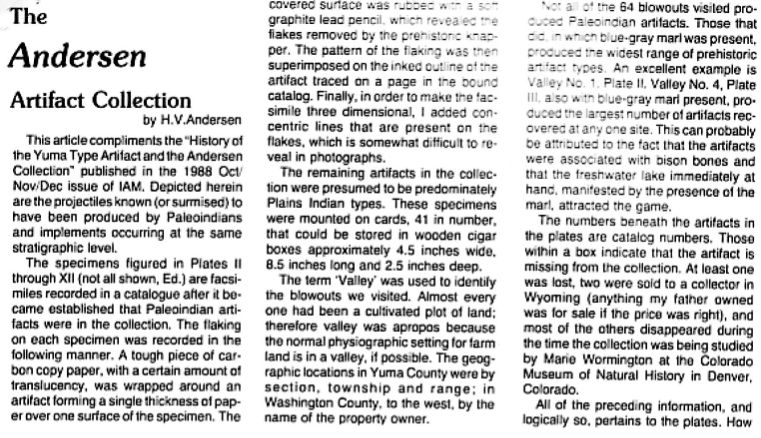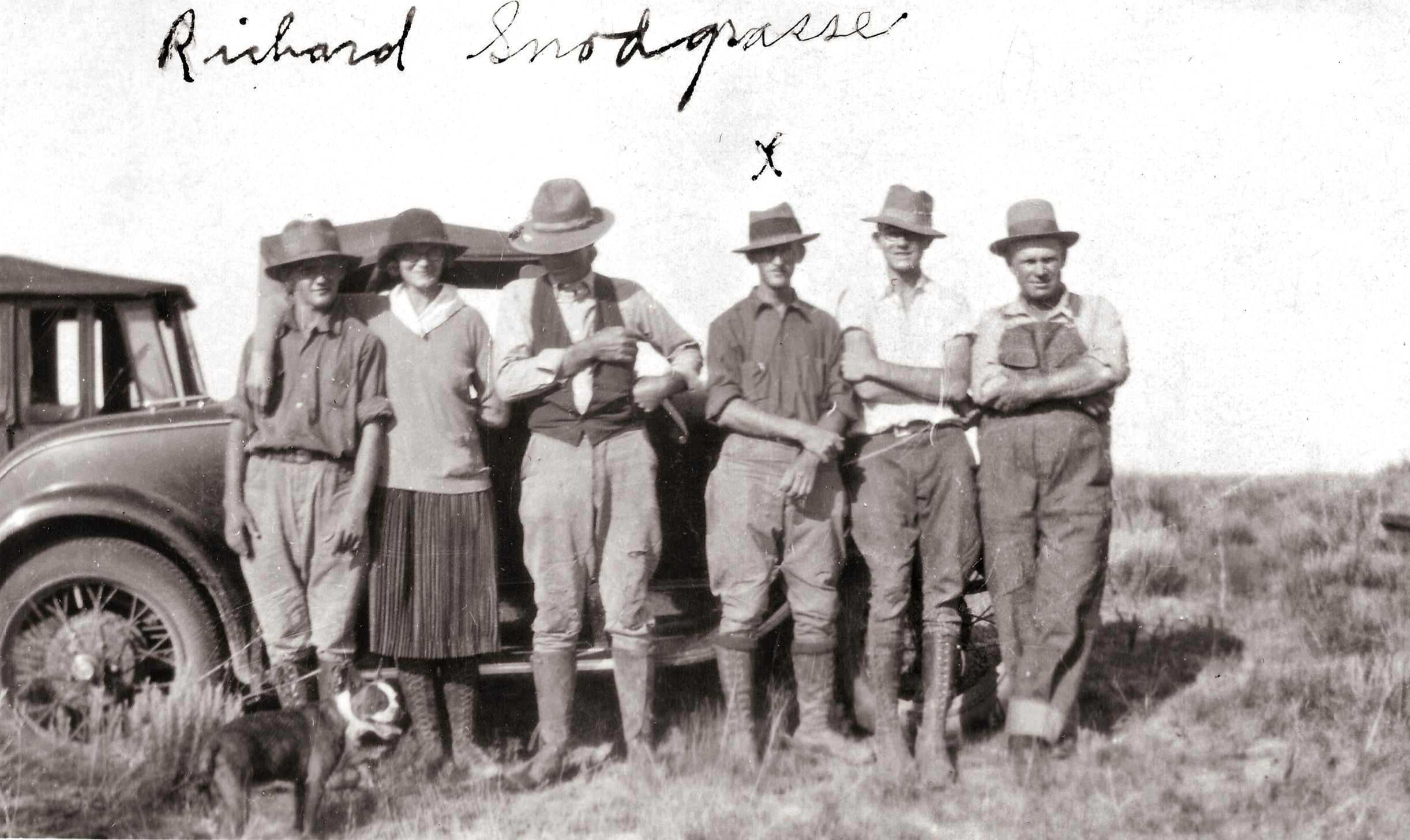
Andersen Collection
The Andersen Collection
Perry Andersen, his wife, and son Harold V. Andersen systematically collected a number of Paleoindian projectile points from blowouts in sand dunes covering Yuma and Washington counties in northeastern Colorado.
a sampling of artifacts, photos, and other material
Perry Andersen and his son Harold V. Andersen began collecting prehistoric artifacts on their ranch south of Yuma, Colorado in 1919. Perry’s wife Pauline also became involved in collecting. The Andersens systematically collected chipped stone artifacts from 64 blowouts in the sand dunes that covered Yuma and Washington counties in northeastern Colorado. The Andersens found a number of Paleoindian projectile points including Clovis, Folsom, Plainview, Yuma, Scottsbluff, Agate Basin, and Eden points. This collection was examined by a number of professional archaeologists in the early 1900s including Marie Wormington (Colorado Museum of Natural History-CMNH), Frank Howland (Curator of Minerals and Geology-Colorado Museum of Natural History), Harold Cook (CMNH), Jesse D. Figgins (Colorado Museum of Natural History), E. B. Renaud (University of Denver), A. E. Jenks (University of Minnesota), Bertrand Schultz (University of Nebraska), and others. The University of Nebraska State Museum acquired the collection in 1972 that consists of more than 3,500 chipped stone artifacts, catalogs, notebooks, photographs, and maps.






